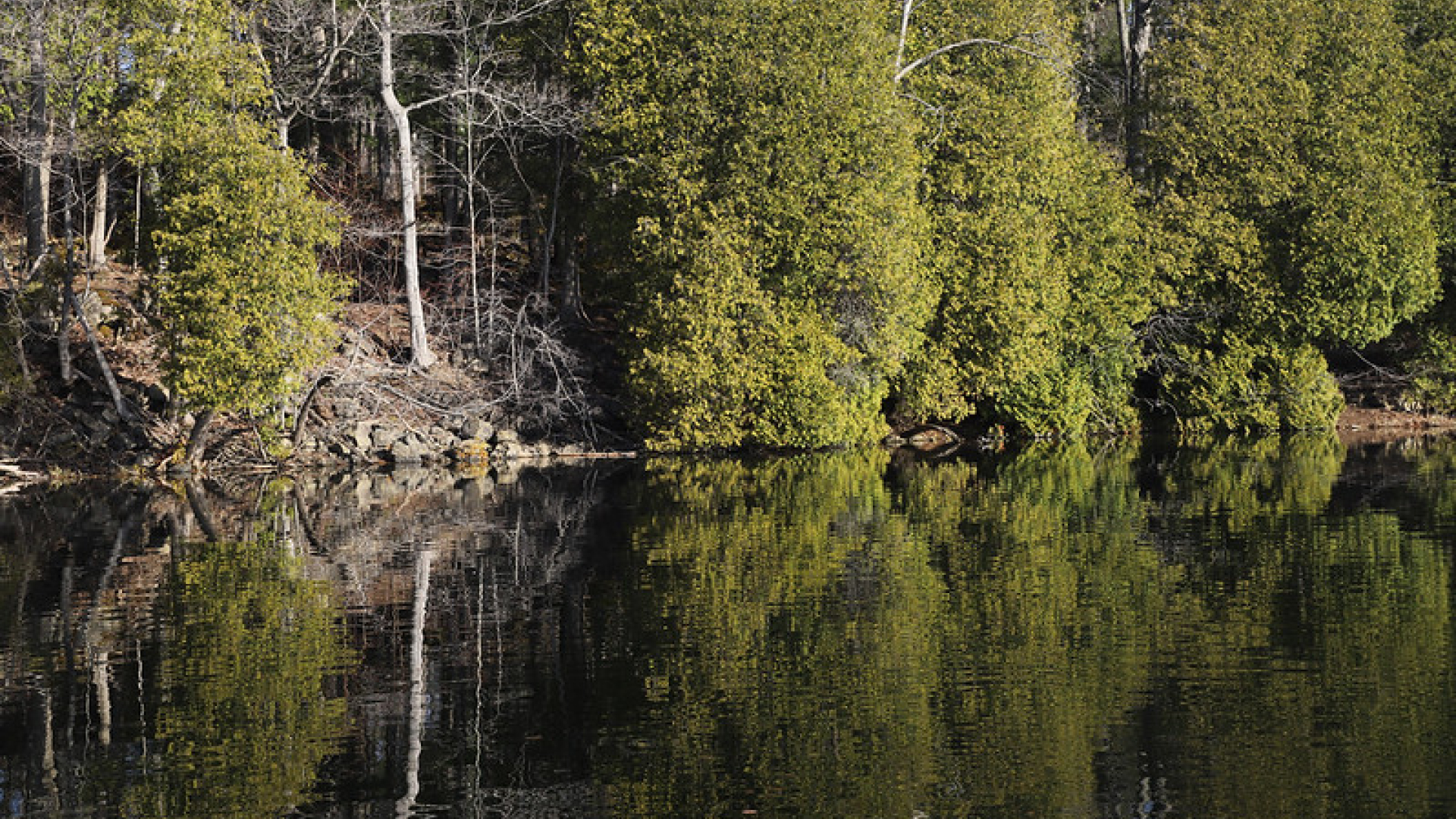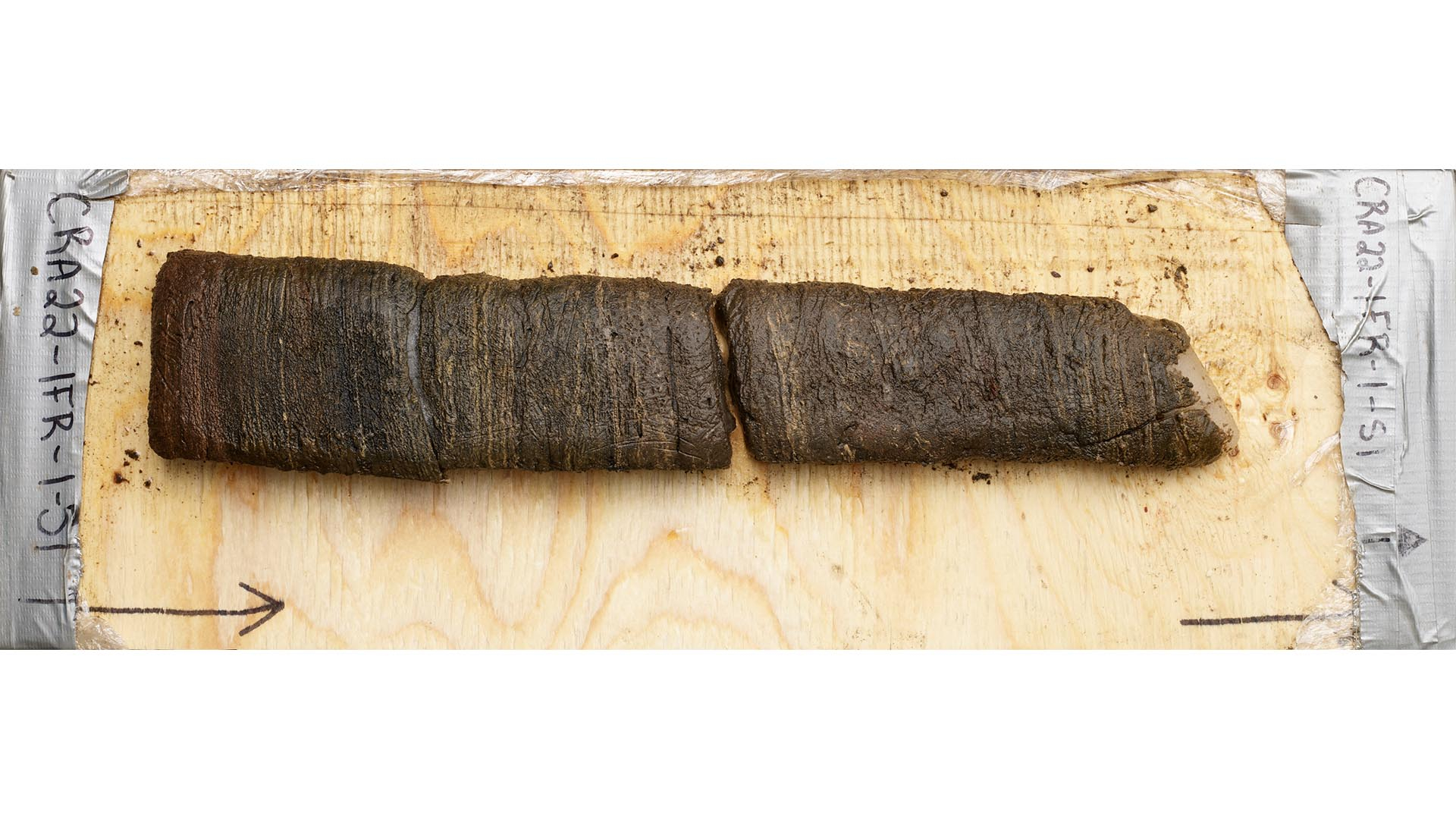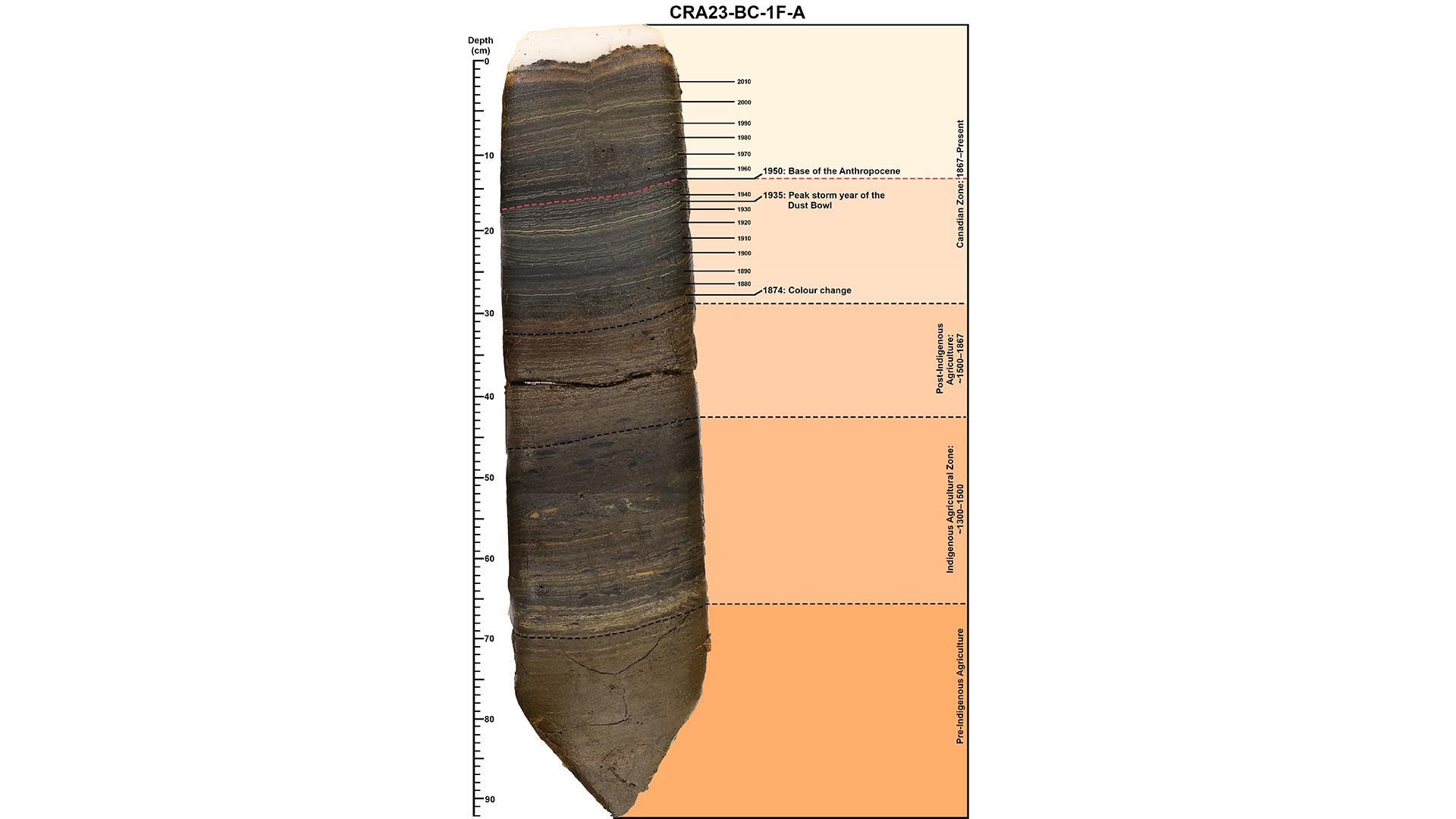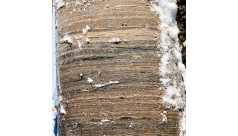Crawford Lake is selected as proposed site to mark the dawn of the Anthropocene.
What does it mean to designate a new epoch defined by human activity? According to Soren Brothers, the Allan and Helaine Shiff Curator of Climate Change, it is a chance to define our fundamental relationship as humans with our planet.
Our planet offers a reflection of events that have taken place throughout Earth’s history, from dinosaur fossils that paint a picture of animals living millions of years ago to evidence of how Earth’s climate has changed. For the past five years, a group of international researchers has been investigating geological sediments from sites around the world that mark a specific shift in geologic time. Named the Anthropocene Working Group, these researchers have considered 12 sites to select a marker that indicates the start of the Anthropocene, a proposed new geological epoch shaped by significant global impacts of human activity.
On July 11, 2023, Crawford Lake in Milton, Ontario was voted by the AWG to be the most suitable location for the proposed “golden spike,” a global reference point in the Earth’s stratigraphic record that indicates the start of a new geological unit of time. The proposal now goes to the broader geological community for a vote.
Led by Brock University Professors of Earth Sciences, Francine McCarthy (ROM research associate) and Martin Head, along with Carleton University Professor of Earth Sciences Tim Patterson, a team of experts (“Team Crawford”, which includes ROM curators Soren Brothers and Deborah Metsger) has been studying annually laminated sediment found on the bottom of this deep lake. This work builds on critical original research on Crawford Lake carried out by ROM Curator Emeritus, Botany, John “Jock” McAndrews (also a member of Team Crawford) and his student Maria Boyko, who first identified maize pollen in its sediment layers deposited more than 500 years previously.
Decades of research by McAndrews and others have investigated the origins and nature of this unique lake. Most recently, sediment cores retrieved by Team Crawford for laboratory analysis revealed a plutonium fallout signal related to the period of nuclear weapons testing from the 1950s to 1964, which is consistent with samples collected from other lakes around the world.
The plutonium signature coincides with the “Great Acceleration,” a period denoted by intense resource use, population growth, and environmental impact in the mid-20th century. The most obvious record of this industrial boom is the rapid increase in concentration of fly ash, primarily from steel mills, in sediments deposited during the early 1950s. Additional biological and environmental indicators found in the Crawford Lake cores, including microscopic diatoms, chrysophtyes, and chemical markers, show evidence of large-scale changes in Earth’s atmosphere and other systems since 1950.
“Crawford Lake is an exceptional site for scientific research,” said McCarthy. “The lake’s rare meromictic qualities prevent layers of water from mixing. In turn, the deep, cool, undisturbed waters above the lakebed help to preserve annually resolvable sediment deposits that we can carefully extract, using freeze-core methods, and analyze to pinpoint geological changes in time and history.”
Whether or not the Anthropocene is ratified as the official current epoch, the sediment cores from Crawford Lake that support its selection will be curated in the permanent collections of the ROM and the Canadian Museum of Nature, preserving this significant natural record of human impact and planetary change. ROM’s role in the Crawford Lake research reinforces the Museum’s position as a place where we can consider, explore, and study the critical questions facing our society today. In this case, as a place to ask—and answer—questions about the relationship between humans and our planet.




